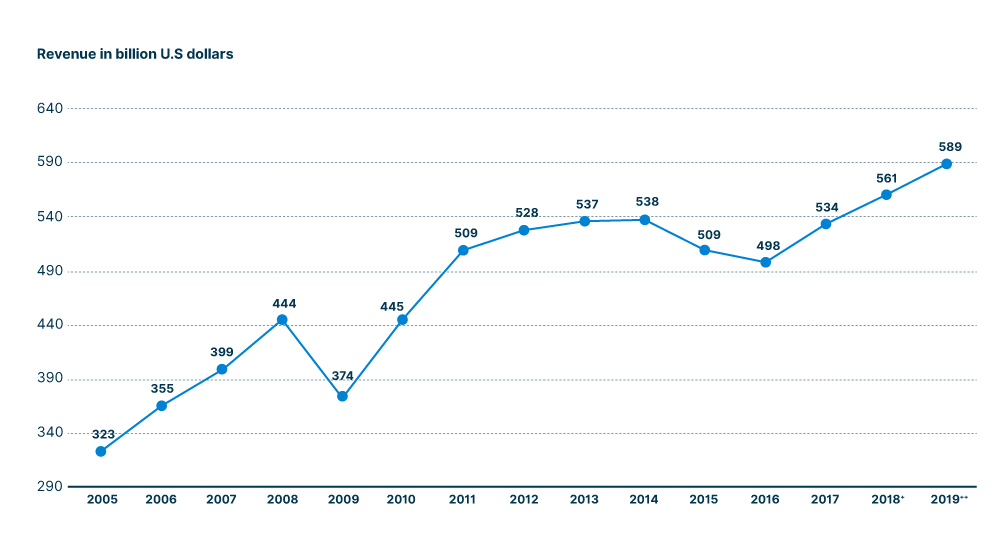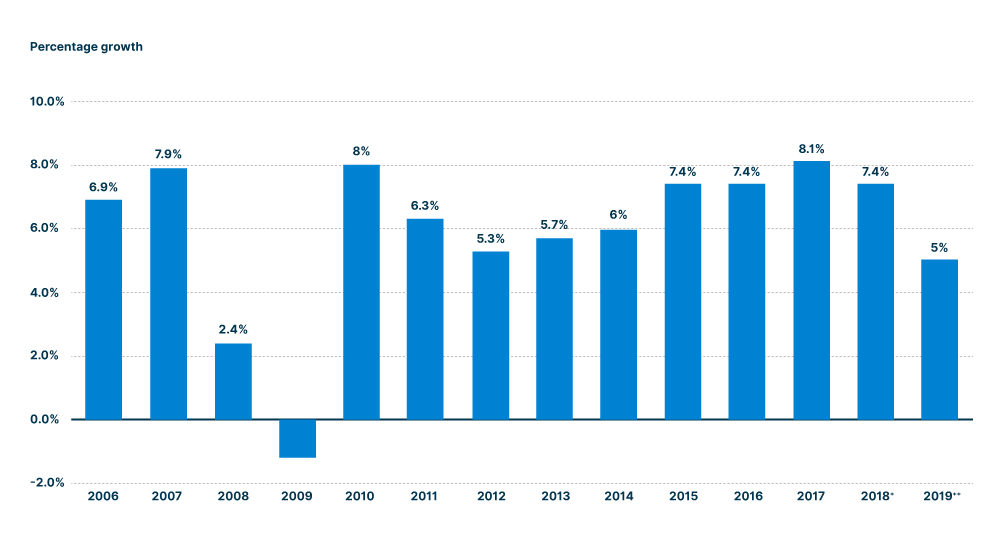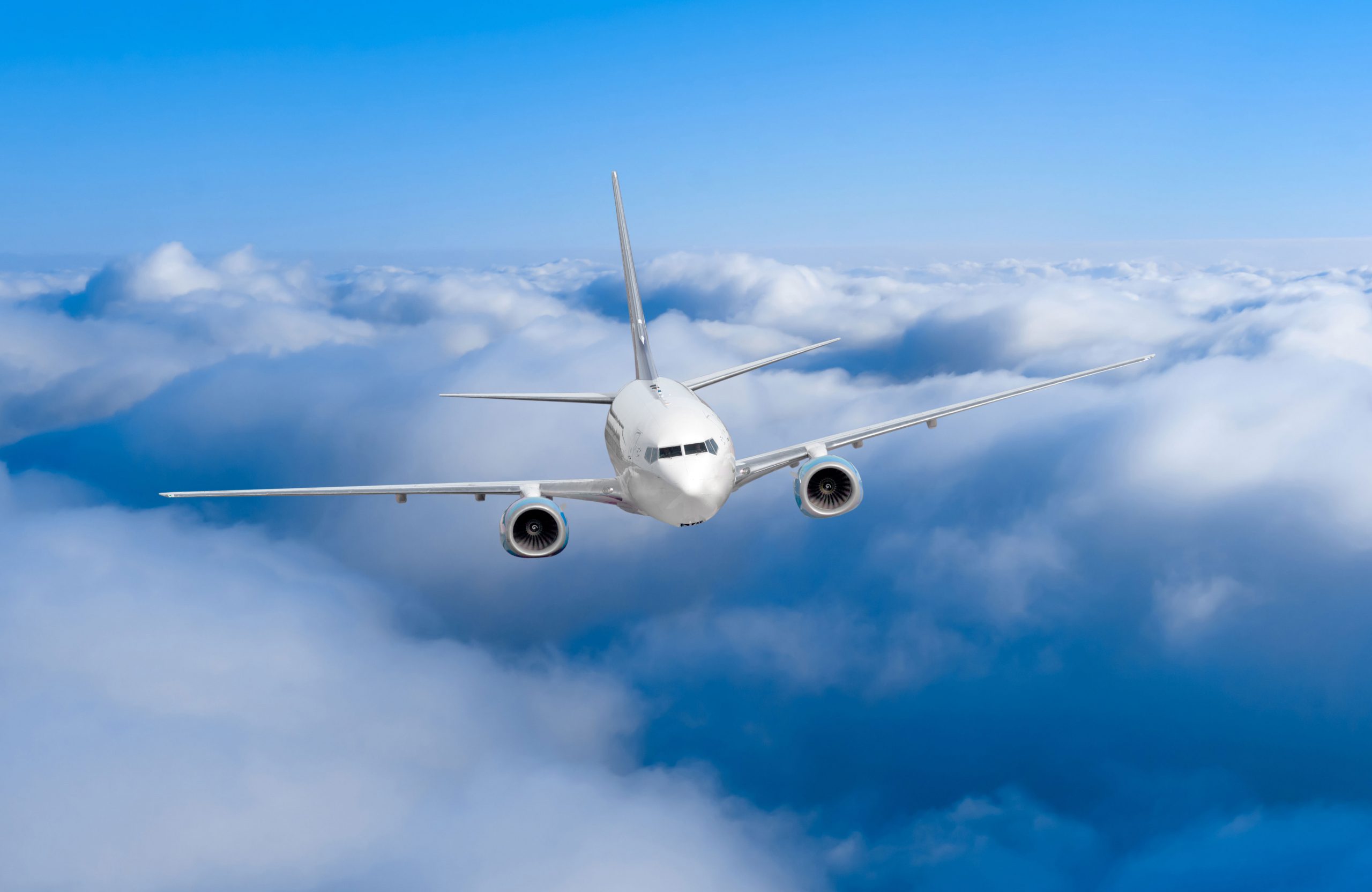Airlines innovate to differentiate themselves from competitors, to cut costs and to enhance in such fierce and fast-changing market
Industry Outlook
The global aviation industry is developing strongly and sustainably with global revenue reached 589 billion US dollars in 2019 (Figure 1). This growth is largely driven by the increasing demand (Figure 2) because of the rising middle class and the appetitie for travel of millennials.


However, while the growing market opens opportunities for incumbents, this also challenges them to thrive in the evermore competitive market.
The past years have seen a rapid rise in the number of new airlines. 79 airlines are founded in 2017 alone(2). Another 219 are going to be launched in the upcoming years(3). On top of that, despite price being the most important factor when booking a flight, with the emergence of technology embedded in customers’ daily life, they are expecting no less with their experience on the sky.
To stay competitive, airlines are finding innovative ways to cut costs but at the same time, be tech-savvy. Below are the top trends in this industry.
Technology trends in aviation
1. Leverage customer data with IOT and data analytics
Data can form crucial insights that provide tremendous knowledge to airlines to understand their customers and from then, they can communicate more effectively, develop better product offerings and provide customised solutions. However, data collection is not an easy process as the majority of customers still book tickets through a third party such as an online travel agent. Effective data analytics (link with data analytics offerings or data harmonization) tools, as well as a close partnership with third parties are essential for airlines to capture and leverage full customer data.
2. Improve customer satisfaction (link with Create Experience beyond satisfaction) with Biometrics
Some well-known applications of this Biometrics include face-recognition and palm-vein identification. They are decongesting security lines in many airports from Athen to NYC. In 2019, biometrics is no longer strictly applied to airport security. Biometrics technology could be utilised for in-seat immigration, biometric payment, and personalised entertainment options.

3. A customer-centric approach using Artificial Intelligence
The most common application of AI is chatbot, which helps to resolve complicated queries and cutting down operational costs (link to Digitize Advanced Operations). Beyond that, AI could be used to produce sentiment analysis on social media to understand customer behaviour and reactions close to real-time or create personalized promotional campaigns to boost upsell/cross-sell opportunities
4. Cut costs and improve efficiency (link with Digitize Advanced Operations) with AR/VR
Augmented and Virtual Reality (AR/VR) Market in Aviation is increasing rapidly with an estimated CAGR of 61.2% from 2019 to 2025(4) thanks to its wide range of applications. AR/VR has been used in providing virtual training with low set up costs for airlines. In a real-life situation, AR can be utilized using a wearable or mobile device to layer digital content into airline engineer’s work environment to help them perform tests and operations on aircrafts faster and more accurate. AR/VR could also be used for in-flight entertainment, for example, Airbus’s Virtual Reality helmet can create an immersive environment for passengers watching 3D movies, playing video games or simply relaxing on flight.
Looking ahead
Evolutionary changes require airline to place technologies as the top strategy to stay relevant and thrive. But before adopting AI, IoT or Biometrics, airlines will first need to understand their pain points, reimagine their key operations and seek ways to differentiate themselves with customers through the smart use of technology. An agile approach should also be adopted to continuously refine the right applications for the business.
Reference sources
(1) Statista. 2018. Passenger Airlines.
(2) Anna.aero. 2017. 79 new airlines begin life in 2017; 25 go out of business – Europe has the highest number of start-ups, but also the most failures.
(3) Airlinehistory.co.uk. 2019. Planned Airlines.
(4) MarketsandMarkets. 2019. Augmented and Virtual Reality Market in Aviation by Technology, Function, Component, Application, Product, Vertical And Region – Global Forecast to 2025.





